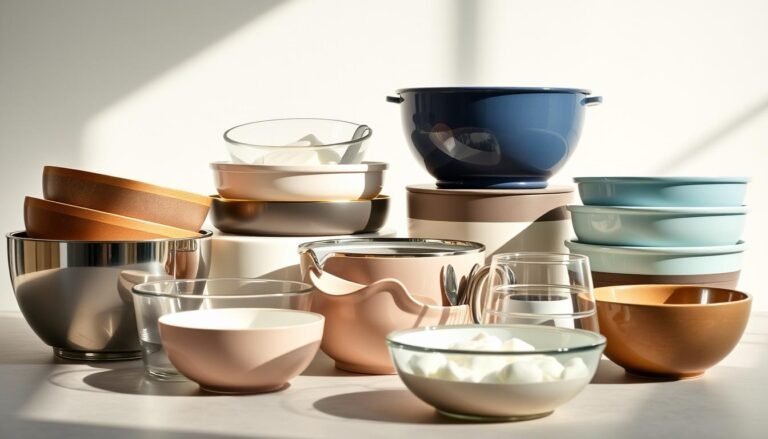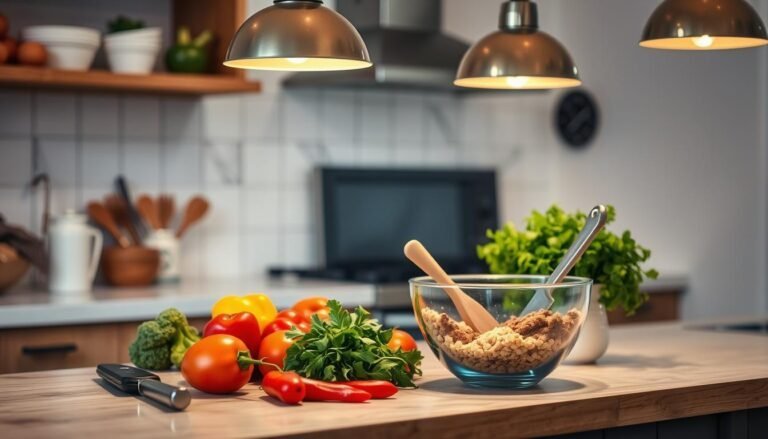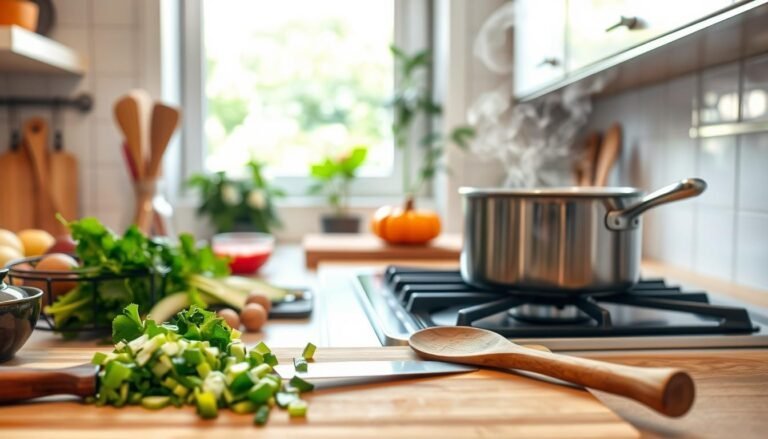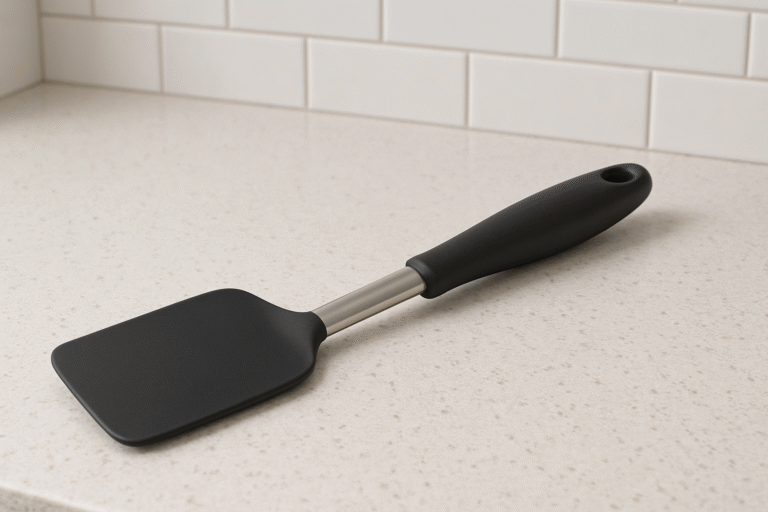Disclosure: This Post Contains Affiliate Links; We earn a commission on purchases.
A kitchen whisk is a key cooking utensil. It mixes ingredients well and adds air to them. This makes it a must-have for many cooking tasks.
The whisk is great at making mixtures smooth and well-blended. It’s perfect for sauces, batters, and doughs. Whether you’re baking or making sauces, a whisk is a must-have for home cooks.
Knowing how to use a whisk can make your cooking better. There are many types of whisks, each for different tasks. So, it’s important to pick the right one for what you’re doing.
Key Takeaways
- A kitchen whisk is a versatile tool for blending and aerating mixtures.
- The whisk’s design allows for effective emulsification and aeration.
- Different types of whisks are suited for various culinary tasks.
- Using the right whisk can improve cooking techniques.
- A whisk is an essential tool for home cooks and professional chefs alike.
The Versatile Whisk: More Than Just a Mixing Tool
The whisk is more than just a tool for mixing. It has a long history and many uses. It helps with sauces, dressings, and even batters for baked goods.
The Unique Design and Functionality
The wire whisk has a long handle and wire loops. It mixes ingredients well and adds air. This makes it key for many recipes. The stainless steel whisk is loved for being strong and not rusting.
Evolution of the Kitchen Whisk Through History
The whisk has changed a lot over time. It started as twigs and now is made from wood, metal, and silicone. Knowing its history helps us see its value and pick the right one for our needs.
Whisks come in many types for different jobs. Whether you cook at home or in a restaurant, the right whisk is important. It can really help with your cooking and baking.
Essential Types of Whisks Every Home Cook Should Know
Knowing the different whisks is key for home cooks. Each whisk is made for a specific task. The right whisk can make your dishes better.

Balloon Whisks for Light and Fluffy Mixtures
Balloon whisks are great for whipping cream and beating eggs. They have thin, flexible wires. This makes them perfect for mixing light batters.
They are a must-have in many kitchens. Their shape and design make them versatile.
French Whisks for Sauces and General Mixing
French whisks are longer than balloon whisks. They’re good for making sauces and dressings. They mix thicker mixtures well.
They are the best whisk for general mixing. Their design is balanced and effective.
Flat Whisks for Gravies and Roux
Flat whisks are great for mixing in shallow pans. They’re perfect for gravies and roux. Their flat shape blends ingredients well.
They are essential for home cooks. They help with sticky or thick mixtures.
Specialty Whisks: Ball, Coil, and Mini Varieties
There are special whisks for specific needs. Ball whisks are good for deep or narrow containers. Coil whisks mix thick batters and dough well.
Mini whisks are great for small tasks. These whisk for mixing tools offer precision and ease.
In conclusion, knowing about different whisks helps home cooks. The right whisk makes mixing and whipping better. This leads to better dishes.
Mastering Techniques: How to Use a Whisk Effectively
Learning to whisk well is key for perfect mixes in cooking and baking. A whisk is a must-have in the kitchen. It mixes, aerates, and emulsifies ingredients. Knowing how to use it right can make your cooking and baking better.
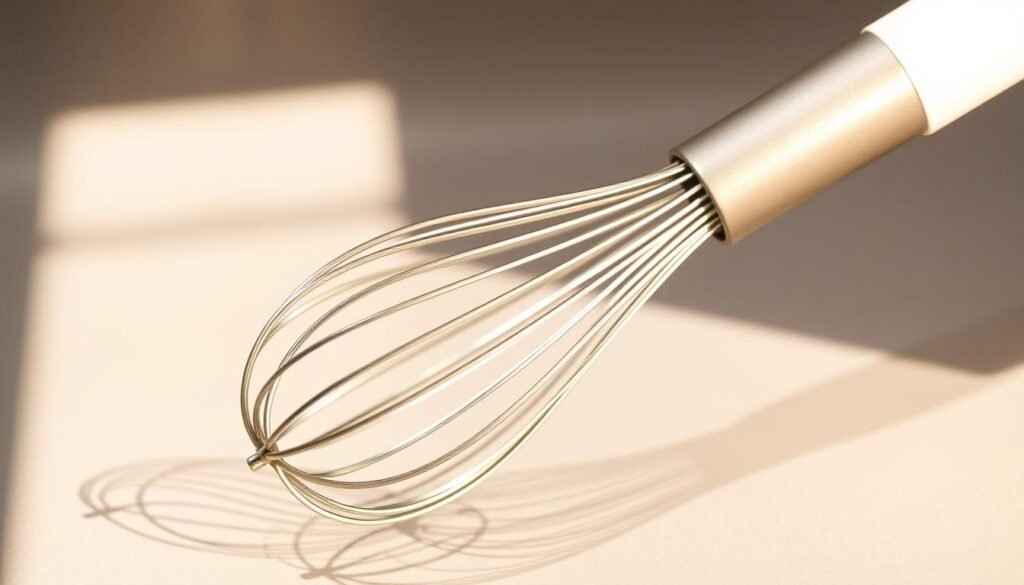
The Science of Aeration and Emulsification
Whisking does two important things: it adds air and mixes liquids that don’t usually go together. A wire whisk is great for this because its thin wires can move easily through mixtures.
Proper Whisking Motions for Different Tasks
The way you whisk can change the result. For whipping cream, use a fast, strong motion. But for mixing thick batters or sauces, a gentle sweep is better. Knowing what you’re doing and adjusting your whisking helps get the best results with a whisk for blending.
Common Whisking Mistakes to Avoid
Don’t whisk too little, mix too much, or pick the wrong whisk. Knowing the science of whisking and picking the right kitchen whisk is key. This way, your mixes will be smooth, your sauces will be silky, and your baked goods will be light.
Selecting the Perfect Whisk for Your Cooking Needs
Choosing the right whisk can make cooking better. There are many whisks out there. Knowing what each one offers is key to picking the right one.
Material Matters: Stainless Steel, Silicone, and Nylon Options
The whisk’s material affects how well it works. Stainless steel whisks are tough and won’t rust. They’re great for mixing a lot. Silicone whisks are soft on pots and pans and don’t stick. Nylon whisks are good because they’re strong and can handle heat.
Think about how you cook when picking a material. For high heat, stainless steel or silicone is best.
Size, Weight, and Balance Considerations
The whisk’s size and weight matter a lot. A big whisk is good for big mixes but hard for small ones. A small whisk is better for small tasks but not for big mixes.
A whisk that feels balanced is easier to use for a long time. Look for one with a handle that feels right in your hand. This makes mixing smooth and easy.
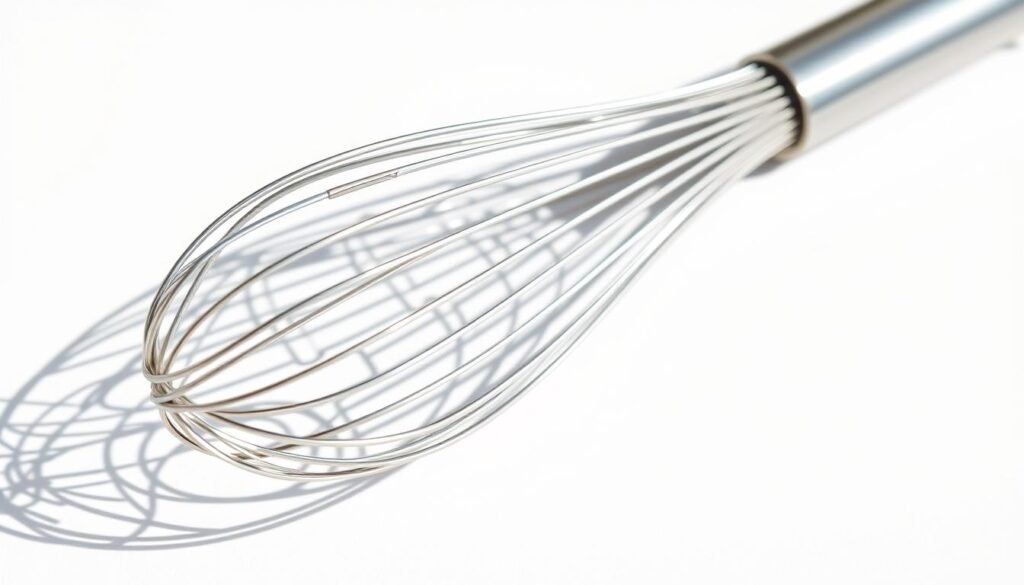
Caring for and Maintaining Your Whisks
Keeping your whisk clean helps it last longer. Wash it with soap and warm water often. For hard food, soak it to get rid of stuck bits.
After cleaning, dry your whisk well to stop rust and bacteria. Keep it in a dry spot, away from sunlight, to keep it in good shape.
Conclusion: Why Every Kitchen Deserves a Quality Whisk
A whisk is a must-have cooking utensil in today’s kitchens. It makes mixing and sauce making easy and efficient. A good wire whisk is key for getting the best results.
Knowing the different whisks and how to use them can really help. Whether you’re baking or making a sauce, the right whisk for baking or cooking makes a big difference.
Buying a quality whisk is a smart choice for anyone who cooks. It helps mixtures get well-aerated, sauces smooth, and baked goods light. With the right whisk, cooking and baking can get much better.
FAQ
What is the primary function of a whisk in cooking?
What are the different types of whisks available, and what are they used for?
What materials are whisks typically made of, and what are their benefits?
How do I choose the right whisk for my cooking needs?
How do I properly care for and maintain my whisks?
What are some common whisking mistakes to avoid?
Can a wire whisk be used for tasks other than mixing and aerating?
Are there any specific whisking techniques I should know for different tasks?
What is the significance of aeration and emulsification in cooking, and how does a whisk facilitate these processes?

With a passion for making good food easy, Ryan focuses on tips, tricks, and approachable advice for anyone who wants to eat well without spending hours in the kitchen. Whether you’re prepping lunchboxes, feeding a busy family, or just need something tasty in a pinch, Ryan’s here to help you keep it quick and simple—one bite at a time.
Subscribe to Our Newsletter


